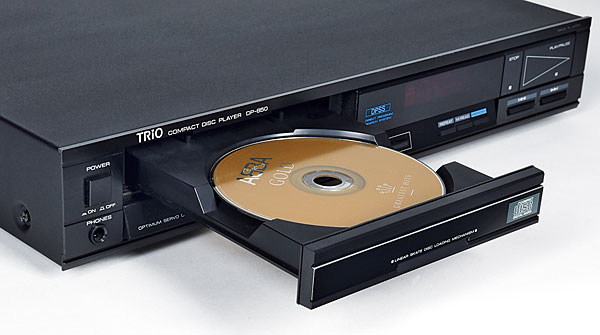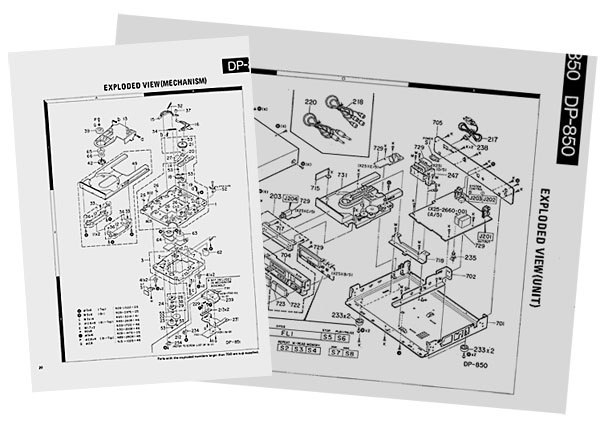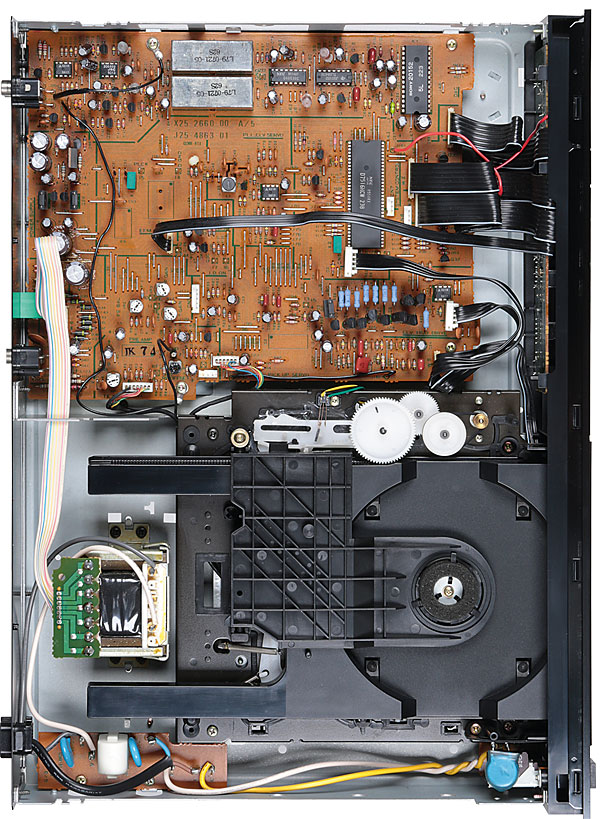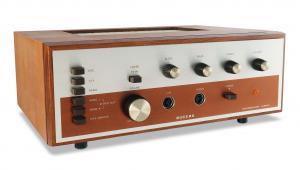Trio DP-850 CD player

 Based on Sony's second-gen 16-bit/2x oversampled chipset, the DP-850 established a toehold in the CD scene for the Trio-Kenwood Corp. How does it shape up today?
Based on Sony's second-gen 16-bit/2x oversampled chipset, the DP-850 established a toehold in the CD scene for the Trio-Kenwood Corp. How does it shape up today?
While not a name often associated with early CD players, Kenwood was not lacking in ambition with its first entry into the field. Rather than test the market with a quiet offering buried deep in the backwaters of its catalogue, in 1983 the company added the L-03DP CD player to its range of top-line components.
Best known for its proprietary 'Sigma Drive' connection to Kenwood's range of amplifiers, substantial 8kB track programming memory and perhaps the longest descriptive sentence ever applied to the fascia of an audio product (it comprised no fewer than 28 words), the L-03DP set the scene for the Kenwood players to come. At first there seems to be little in common between the hulking L-03DP and the slim DP-850 of 1986 seen here, but beneath the skin both share a common parent: Toshiba.
Brand Matters
The L-03DP had been based on Toshiba's XR-Z90 model and the players that followed it variously employed the XR-Z70, 60 and 50 main assemblies in their construction. The preceding DP-840 was essentially a Toshiba XR-Z40, but after this things began to diverge. Toshiba started to rely more on external contractors for the assembly of its CD players and though Kenwood did the same, there was still much commonality between the two. However, there is no direct equivalent to the DP-850 in Toshiba's range – not in the UK and the European markets at least.

Confusion with Toshiba's range was not Kenwood's main concern in the UK, however. Rather, it was that the company shared its name with a British kitchen appliance manufacturer that enjoyed a high profile position. The problem was resolved by using the firm's 'Trio' identity (originally employed by the Kasuga Radio company in Japan but later sidelined by Kenwood when Jrio Kasuga left the organisation to form Accuphase) for all its products sold in the UK. The situation endured until the 1990s, after which the Kenwood name was again used in all regions. The DP-850 here is a UK model so carries Trio branding on its fascia and 'Trio-Kenwood' on the rear panel.
Auto Function
The DP-850 fitted neatly into the 'wide but sleek' look of the 1986 Kenwood range. CD players still retained some of their novelty value at this stage but it was clear this was not going to last forever, meaning that something extra was now needed to make a model stand out. This was especially the case in the mid-market sector where the DP-850 was to be found. To help it along, its extra feature was system integration with Kenwood's other components.

Referred to as 'Auto Function', an extra data cable connected between Kenwood sources and a suitable amplifier would give automatic source selection and other useful aids in the running of the system. Remote control could be added too, using the RC-95 infrared receiver and its matching handset. Compact Disc's natural ability to provide swift and accurate track selection made it a natural partner for set-ups like these for despite various attempts, records and tapes were not able to offer a similar experience with the same degree of certainty.
As one might well expect from a design sharing its DNA with Toshiba, the basic construction of the DP-850 was conventional but solid. The machine's underlying technology shows its age with the use of Toshiba's TOPH7810 laser and optical block, a substantial die-cast alloy component which would rapidly be miniaturised and simplified in the generations of players to come. The silent-running brushless DC spindle motor would also be engineered out of models that followed and replaced by simpler and cheaper alternatives. Yet while the single Sony CX20152 16-bit DAC chip, time-shared between the two channels [see PM's Lab Report, P129], was not state-of-the-art in 1986, it was an arrangement still commonplace at the time in all but the most exotic machines from Japan.

Filter Blocks
Meanwhile, linear conversion at 44.1kHz was employed, just as in all the early Japanese players. There is no digital filter used in the DP-850, unwanted digital artefacts from the decoding process being removed by two tuned analogue filter blocks. The design of these was not straightforward, it being a delicate balancing act of flatness of response against phase integrity. Although seemingly insignificant, the final characteristics of these filters have perhaps the greatest effect on audio performance.
A system called 'Optimum Servo Control' is mentioned in Kenwood's promotional material for the DP-850 and also tagged on the fascia of the player itself but technical details of the scheme and its advantages are scarce. What is clear is that the DP-850's servo system is based around a standard Sony chip (the CX20108) which could be found in many other players of the era – for example, the Sony D-50 portable [HFN Jan '13], suggesting that the effects of 'Optimum Servo Control' were likely to be subtle at best.

Similarly, the DPSS (Direct Program Search System) emblem proudly given centre stage on the player's front panel refers to nothing more than the ability to skip tracks backwards and forwards to any point on the disc – a facility offered by virtually every other CD player.
High Status
From a quick glance I'd have guessed that the DP-850 came from the 1988 or 1989 season, so modern and neat is its appearance. However, the depth of the cabinet (305mm, over a foot in old money), its weight and solidity give away that this is an earlier model as they indicate it was made at a time when a CD player was still a high-status possession. High-gloss finishes and immaculate attention to detail characterise the fascia, along with fussy legends and bold graphics that were the essential warpaint of nearly every mass-market audio product at the time. Despite this, I can't think of another CD player which more closely approaches ergonomic perfection than the DP-850. There are just nine controls and all are logically grouped and intelligently sized in line with their importance.























































